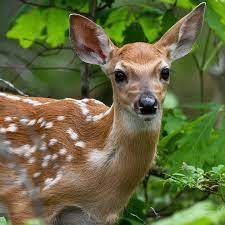Deer, graceful and elusive creatures of the wild, have captured the imagination of humans for centuries. From their elegant appearance to their remarkable behaviors, deer remain a subject of fascination and intrigue. Let's delve into five captivating facts about these enchanting animals.
**1. Diverse Species and Habitats
Deer are not a singular species but belong to the family Cervidae, which encompasses a wide variety of species. From the iconic white-tailed deer commonly found in North America to the majestic elk in the Rocky Mountains and the sika deer native to East Asia, the deer family is remarkably diverse. These creatures have adapted to various habitats, from dense forests to open grasslands, showcasing their impressive ability to thrive in different environments.
**2. Antler Growth and Casting
The antlers of male deer are iconic symbols of the animal kingdom. However, what many might not know is that these antlers are temporary structures. Each year, male deer shed their antlers in a process called casting. After the mating season, the antlers begin to weaken, and the deer eventually sheds them to grow a new set. This regrowth process is fueled by hormones and can result in antlers larger than the previous year's, a phenomenon highly influenced by factors like age, genetics, and nutrition.
**3. Intricate Communication and Behavior
Deer possess a range of behaviors and vocalizations that play a crucial role in their interactions. While often associated with silence, deer do communicate audibly through grunts, snorts, and even high-pitched wheezes. Non-vocal communication involves body language such as tail flicks, ear positions, and raising the hackles along their back. Fawns, in particular, are known for their spotted coats, which provide excellent camouflage and protection from predators.
**4. Migratory Patterns
Some deer species are known for their remarkable migratory journeys. For instance, the mule deer of North America showcase one of the longest terrestrial migrations in the continent. They travel distances of up to 150 miles between their summer and winter ranges, navigating various challenges including natural obstacles and human developments. This extraordinary journey highlights their determination and adaptability.
**5. Ecological Impact
Deer play a significant role in shaping ecosystems. As herbivores, they help regulate plant populations and maintain the balance of various plant species. However, in areas with overabundant deer populations, these creatures can have a negative impact on forest understories and other vegetation. Striking the right balance is crucial for preserving biodiversity and the health of ecosystems.
In conclusion, deer's captivating characteristics extend far beyond their picturesque appearance. Their adaptability, behaviors, and roles within ecosystems showcase the intricate relationships between animals and their environments. As we continue to study and appreciate these remarkable creatures, we gain a deeper understanding of the delicate balance that sustains life on our planet.


